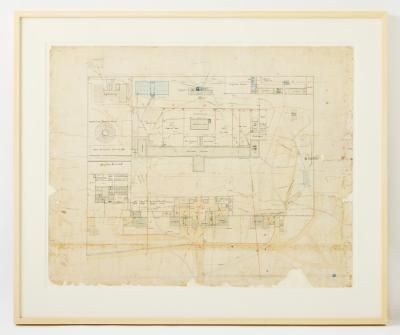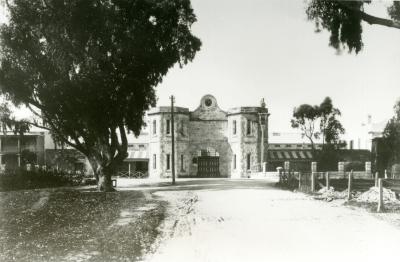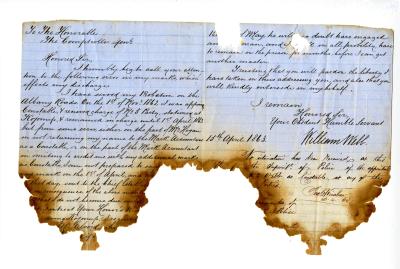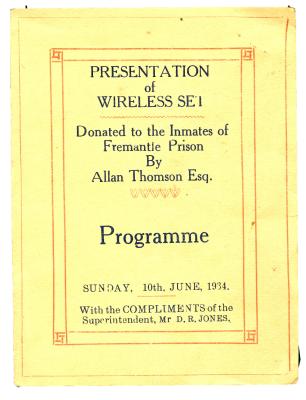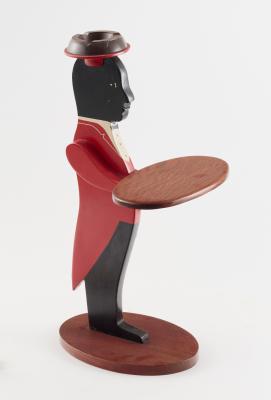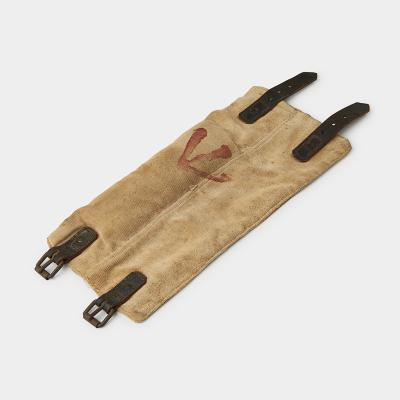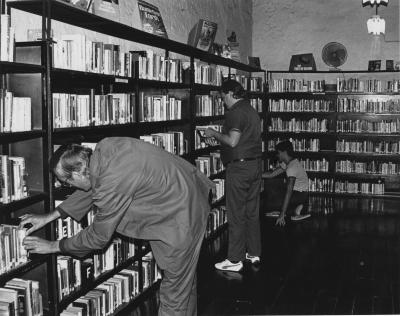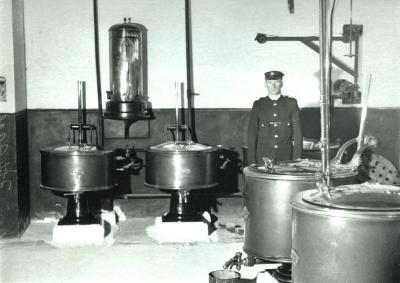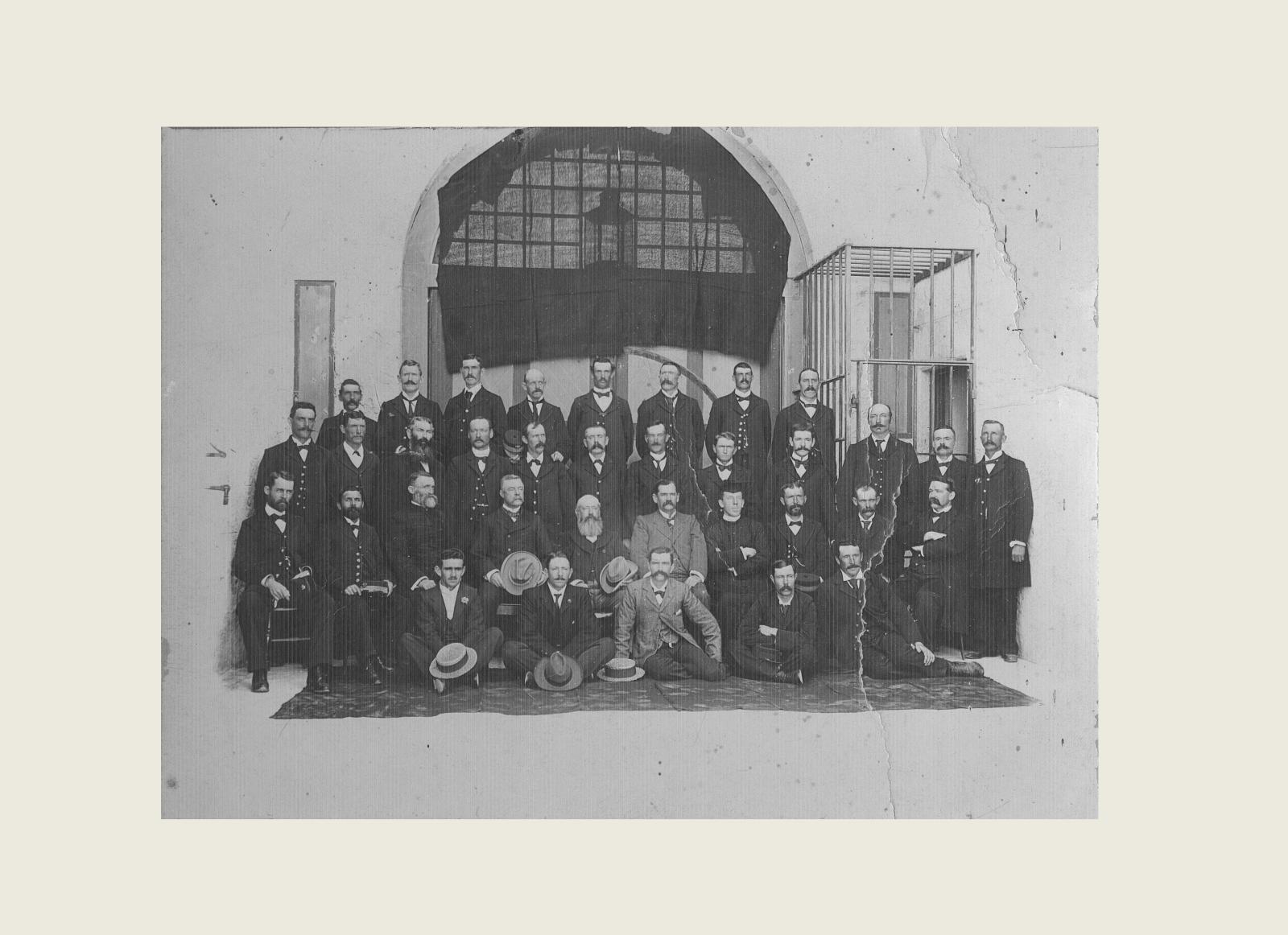IMAGE OF PRISON OFFICERS AND OFFICIALS
1890 - 1910Black and white, landscape photograph of a group of Prison Officers, two chaplains, possibly with medical and clerical staff. A group of men positioned for a formal photograph, arranged into four rows. There are five men in the front row sitting on the ground. The men in the second row are seated on chairs. The remaining two rows of men are standing. All the men are in dark clothes, with the exception of the central figure in the front and second rows, who are wearing light coloured suits. The group of men are positioned in front of a limestone wall with a large dark gate in the centre. Image pasted onto brown cardboard surround, with no frame.
This picture is believed to have been taken between 1890 and 1910. The names of those individuals in this photograph are unknown.
A modern, plastic frame for this image has been labelled, “To the School, from 5th Class, Probationary Officers”. This frame was reviewed by curatorial staff in July 2019 and after some research, it was decided the frame was most likely unrelated to the photo documented in Mosaic record 00.182.1. The individuals in the photo did not adequately match the plaque description on the frame and the photo which was glued to board, did not fit the frame.
Details
Details
During the convict era there were a number of job titles which applied to those who oversaw the Prison, including Warder, Instructing Warder, Convict Officer and Discipline Officer. Instructing Warders directed the work to be done by convicts, whilst Discipline Warders were tasked with ensuring works were carried out, and to oversee prisoner behaviour. Following the convict era, Prison Warders continued to be employed at Fremantle Prison, though their job descriptions were not formalised until the Prisons Act of 1903.
Some Warders at Fremantle were experienced men, previously employed in English Prisons, who had accepted free passage for themselves and their family to Australia, whilst others were colonial born. Not all Warders were trained or literate, with the ability to read and write not a requirement for employment. This changed when it became necessary for Warders to record the amount of labour performed by prisoners, and their behaviour.
Following the Pennefather Royal Commission in 1911, it was recommended that Warders be employed only after passing an exam. The exam included assessment of handwriting, spelling, and arithmetic. Once hired, all new Warders were on probation for six months, and were liable to be removed or dismissed without reason at the discretion of the Comptroller-General. On resigning from the service, an officer was normally required to serve out one month’s notice or pay one month’s salary in-lieu.
Warders were not well paid. During the 1860s, Assistant Night Warders, who were one of the lowest ranked Warders on site, earned about £30 a year. Meanwhile a Chief Warder in 1865 began on a salary of £112 per annum, with annual increases of £20, while Principal Warders ranged from £62 to £130. For these wages Warders worked long days, rarely less than ten hours at a time. In 1905 it was reported that Prison Warders were working 12 hours per day. Although the government denied this, some Parliamentarians did take up the Prison Warders cause, and on August 1, 1905 it was recorded in the Legislative Assembly that, “In the opinion of this house the time has arrived when the hours of the Warders employed in Fremantle Gaol be reduced to 8 (hours) per day.” This is the first recorded instance of a mandated eight hour work day in Western Australia.
Warders were also responsible for undertaking some unpleasant tasks, such as conducting flogging. The position of flagellator was so unpopular that incentives of extra pay, up to ten shillings a flogging, or better quarters in the gatehouse, were offered to men who would accept the role.
The title of Prison Warder was changed to Prison Officer in the mid-twentieth century.
Open in Google Maps
Nearest geotagged records:
- PHOTOGRAPH OF CATHOLIC CHAPEL AFTER 1988 RIOT (0km away)
- AD REM PRISON NEWSLETTER (0km away)
- CONCERT PROGRAMME (0km away)
- IMAGE OF CHRISTMAS FESTIVITIES (0km away)
- ENTRANCE TO FREMANTLE PRISON (0km away)
- IMAGE OF SALLY PORT (0km away)
- IMAGE OF THE MAIN CELL BLOCK (0km away)
- GATEHOUSE/RECEPTION (0km away)
- IMAGE OF BAKING BREAD (0km away)
- PHOTOGRAPH OF PRISON LIBRARY (0km away)
Nearby places: View all geotagged records »

